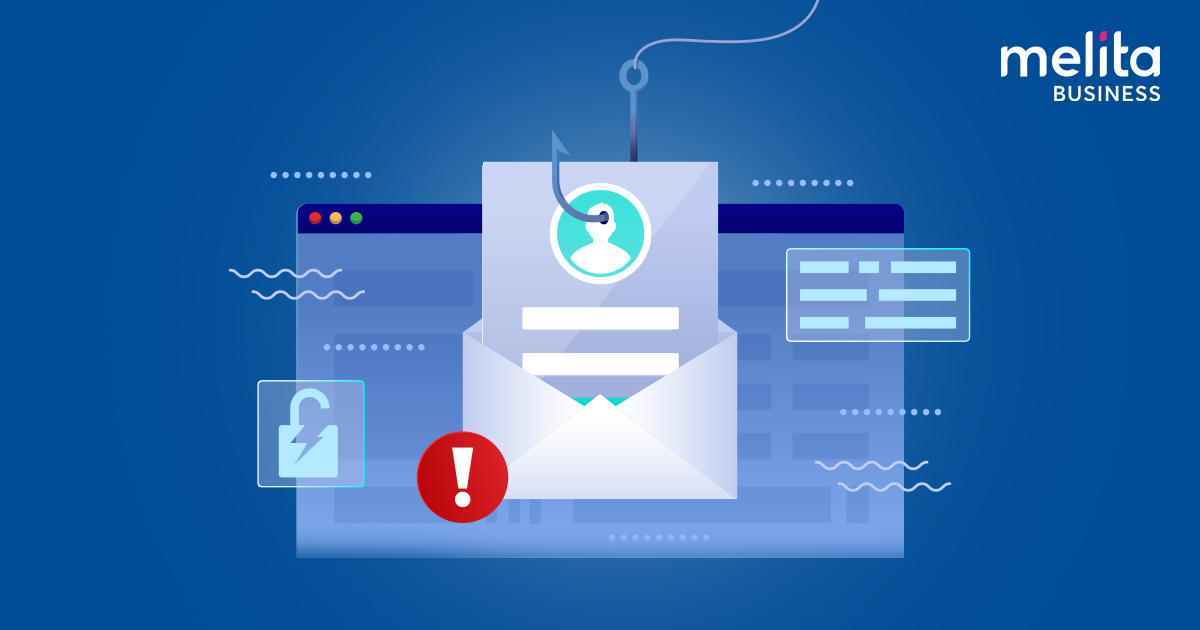
Companies face ever-increasing levels of risk as hackers come up with more innovative ways of targeting businesses and their employees. Malicious software and increasingly sophisticated social engineering plays are constantly being developed in hopes of exploiting security weaknesses. A data breach can damage your operational capacity, jeopardise your financial well-being and leave your customers wondering about the safety of their private information. If your systems are hijacked using ransomware, you may even find your business coming to a complete halt.
What Is Phishing
The phishing meaning is used to describe a form of cybersecurity attack where malicious players use manipulation and social engineering techniques to deceive victims and get them to give up sensitive logon, security or other personal information. That information can then be leveraged to create additional exploits within a business. The attacks are often conducted by email, but may also involve phone, text or instant messaging.
When looking at phishing definition, the party conducting the attack often pretends to be a trusted entity. The goal is to trick the system user into clicking a dangerous link or opening an attachment that installs malicious software. It’s likely that Information gathered during the attack will be used to further penetrate corporate systems, increasing the level of damage.
Phishing Methods
There are several common methods employed in phishing attacks, so it’s helpful to look at types associated with what is phishing email. All rely on a form of social engineering where the targeted individual is manipulated into following a certain behaviour, or enticed into taking action that will result in a successful attack.
Link Manipulation – One of the most common phishing ploys is to design an attack that encourages users to open a false email and click on a malicious link. If they do this, they are often led to a fake website that directs them to enter their password or reveal other financial or security information. Often the URL you are clicking on will have an innocuous description, so it looks safe on the surface.
Infected or Malicious Attachments – A hacker may send out emails with a malicious attachment. The user is enticed or directed to click on the attachment, and once they do so, it executes code directly on the user system. In this type of attack, each attachment may appear to be a legitimate Microsoft office document, PDF or other executable.
Forged Website – If you receive an email using this form of attack, you will often see a website that has been cloned to look like a reputable site from a recognizable company. Hackers set up these website forgeries to fool the user into proceeding and entering sensitive information.
Filter Evasion – Almost all email providers or systems include a spam filter that scans messages and identifies ones likely to be from malicious sources. Hackers have become adept at bypassing these filters. Often, they may embed dangerous text or links within cells in a table, to bypass the text filter.
Types of Phishing Attacks
When looking at what is phishing, it’s useful to review the different types of phishing attacks. Email phishing is the primary method of attack, with malicious parties creating false domains that mimic the look and feel of genuine domains. Spear phishing attacks include emails sent to very specific individuals, where an attacker already possesses some information about the user such as name, job title or where they work.
A Whaling attack is targeted toward senior managers or others in the top structure of a company. In this case, the malicious party taps into the detailed information about the individual that is in the public domain and develops an attack that leverages that knowledge. With Angler phishing, bad actors create fake social media accounts that mimic legitimate businesses and use that channel to gather personal information. There’s even a form of phishing that uses voice or SMS attacks, known as Vishing and Smishing respectively.
How to Recognize a Phishing Attack
If you want to avoid a phishing attack, you should be aware of some of the telltale signs of a phishing play. There is often a sense of urgency associated with the email you receive, and the attacker leads you to believe there will be negative consequences if you don’t act immediately. The message may have a tone that sounds out of place, such as when it is overly casual or, alternatively, uses very formal language.
The phishing email is often accompanied by unusual requests, such as when it might pretend to be from your IT team and ask you to perform a software installation that they would typically handle. You are likely to spot linguistic errors in a phishing email and note some odd web addresses too. You may be asked to provide logon credentials at a site that mimics the real company.
What to Do If You Fall Victim of a Phishing Attack
If you suspect you have become a victim of a phishing attack, there are a number of steps you should take immediately. The first action you should take is to disconnect your device from the company network, in hopes of preventing the spread of possible malware. In the event you have entered your logon information into a fake website, go to the real site and change your login and password. Your IT group should do a full scan of the network to identify and neutralise any malware.
Key individuals from the business should interview employees and determine what actions they took, and also conduct a thorough forensic analysis and review of relevant logs to see exactly what caused the incident to occur. Spam filters should be adjusted based on the findings, and web research should be done on similar attacks.
How to Prevent a Phishing Attack
If you own a business and are wondering how phishing can be prevented, there are key safeguards and tools you can use. One of the best defenses against phishing is to install layered security software such as spam filters, firewalls and antivirus programs. You’ll also need to make sure that you consistently update this software.
Regular backups are a must, and you must conduct tests of your backup and recovery plan. Policies that encourage and require strong passwords are valuable, and where possible multi-factor authentication should be used. Employee awareness training is key, to recognise phishing emails, so that they do not share sensitive information such as password on unsecure sites, force regular password changes and plans to specifically protect remote workers.
Partner with suppliers who have certifications such as ISO27001 – this shows that within their internal processes and procedures they put information security at the centre of their operations. They undergo a rigid audit on their information security processes.
The importance of having a backup and recovery processes
- in case your data has been compromised, you would need to recover your data as quickly as possible to be able to work again.
- Melita business is offering reliable cloud based backup solutions and Microsoft 365 cloud based data backups to keep your company data backed up in a safe and secure environment.
Should you like to learn more, schedule a meeting with one of our technical experts during ICE. The Melita Business team will be exhibiting on stand N7-452.
 Internet + TV + Telephony
Internet + TV + Telephony Internet + Telephony
Internet + Telephony